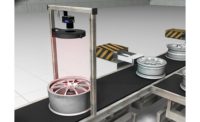Engineers Look to Web for Resources
http://www.nspe.org. This is the National Society for Professional Engineers' (NSPE) Web site, which contains the latest in engineering news. This site is membership-based, but visitors are able to access all areas except those listed as members only. For links to engineering-related news items, click the News Room tab near the top of the page. Then click one of the links, such as NSPE News Releases. Each release is dated and links to the whole story. Click on the Professional Track tab to bring up a page that links to topics on Licensure, Ethics, Liability, Project Management, Government Relations and Engineering Forums. Want to post a resume? Click on the Employment tab. On this page, visitors can view the NSPE Job Board, Online Resumes, Salary Information and NSPE Job Resources. On the sidebar, there are more links to useful information. Convention and Expo gives information on NSPE's 2001 convention. Want to become a member? Click the Join NSPE Go button. This site is easy to navigate and has some useful information.
http://www.myb2o.com. This Web site implements a collaborative innovation platform (CIP). CIP is geared toward the build-to-order design chain. At the top of the homepage are topics to browse. Clicking on Resources brings up a page with industry areas, such as Reverse Engineering, Rapid Prototyping, Analysis, Inspection, eZones and Mass Customization. Each area has links to News, Features, Tool Box or Categories. Under eZones, click Manufacturing for a listing of reference links. Click Community to view the latest forum questions. Looking for a company? Click Yellow Pages to search by company name or by location. Thinking about doing a project, but need a little help? Click Marketplace to find someone who can help. To sell or buy services, visitors have to register. There is no fee to sign up. If there are questions, click Support on the homepage for a customer service phone and fax number, and e-mail address.
http://www.engineers4engineers.co.uk. This British-based site is the Engineering Technology Web site, which was designed by engineers for engineers. On the homepage are links to other sites, that relate to engineering. Click on Tech Information to bring up links to specialized categories, such as Designing for Manufacture, Mechanical Engineering, and Units of Measurement and Instrumentation. Each category on these pages link to company Web sites or informative sites on specific technologies. Click on Expert Companies on the homepage to link to descriptive listings of companies that specialize in areas such as Air Movement, Analysis, Data acquisition-hardware and software, and Engineering Management. Looking for a job? Click on Jobs-Engineering and IT. Need an acronym that is engineering related? Click on Non-Engineering then click the Acronym Finder link. This site is easy to navigate. You will want to bookmark this one for later.
http://www.eevl.ac.uk/wwwvl.html. This Web site is the Edinburgh Engineering Virtual Library, another British-based resource. This library is a guide for engineering, mathematics and computing. On the homepage are links to Specific Engineering Subject-Area WWWVLs, as well as links to the engineering homepage, Web server administrators, how to get listed and how to set up an engineering subject-area. Clicking on WWWVL/Engineering (EEVL Home Page) takes visitors to a search for engineering resources. Also on this page are links to More Services and Hot Links. If a visitor doesn't know what to look for, there is a place to conduct a search. Or, near the bottom of the page are links to different engineering resources, such as Aerospace and Defense Engineering, Engineering General and Engineering Design. Click on Engineering General to bring up a list with more links into Engineering General. These links list more information on the topic. Back on the homepage are different categories under Specific Engineering Subject-Area, such as Aerospace Engineering, where visitors can chose links to either Aerospace or Aviation. Both links bring up the Embry-Riddle Aeronautical University. This site is a little confusing but contains useful information.
Feedback
From "Reader Forum" visitor Maureen Wellik.
Q: My company is searching for a software application that collects test results using a keyboard, instead of directly through the test equipment, and generating Certificate of Analysis and Conformance sheets. Unfortunately, I am not from the quality department but have been tasked with locating a list of packages that the quality department can evaluate and select. Does this type of application generally fall under a broader application base of quality management systems or data collection, or another name? I was trying to use the Quality Online database, but I am unsure what category would match our requirements. Thank you for any assistance you can provide.
An answer came from Quality Online visitor CarolX.
A: Look under data collection or SPC. There are a variety of software packages available. Most companies will provide a 30-day evaluation program.
From "Reader Forum" visitor vishnu_km.
Q: I would like to know about delivering software products to clients. After testing the software, what more needs to be checked before delivery to the client? Thank you for helping me.
An answer came from Quality Online visitor mstevens.
A: Http://www.qualityassistant.com/softwaredevelopment.shtml website has a software development plan, which contains a section for software delivery and installation. Good luck.
From "Reader Forum" visitor Sarika.
Q: While there are a number of ways of defining a process and implementing it, I would like to have some feedback on how we can ensure that the process is being followed. Who owns the process? Is it the user, big boss or the quality department? I am personally of the opinion that the user should own the process and also monitor the effective implementation of the process. But, this would typically lead to a people watching over people situation in the organization where the lower level user is watched by his boss for compliance, and so on. Are there any innovative ideas on how we can ensure process compliance without making people dependent?
An answer came from Quality Online visitor Steve Herfurth.
A: Usually the user is the process owner. In some rare instances it is owned by others. The process owner is responsible for implementing the process and for making sure that it's generating correct output.
Now, how do we make sure that that's happening? Depending on the process, and the expected output, we can put a number of things in place to make sure that the process is operating correctly. We can audit it as part of our internal audit program. We can inspect the output as part of our in-process inspection program. Or, we can monitor metrics that are a byproduct of the process. There will always be a certain amount of people watching people, but you can make it as unobtrusive as you want.
From "Reader Forum" visitor Mike.
Q: As a manufacturer of precision devices, we are seeking some standardization in the time for inspection of variable or attribute product quality. Manufacturing personnel are measured against industrial engineered rates for their throughput, but inspectors are permitted to examine the items without a defined inspection time or standard. Does a guideline exist for providing definition to inspection time for variable or attribute data? I would appreciate any guidance you may offer.
An answer came from Quality Online visitor Joe Perito.
A: This is what industrial engineers are for. You will need to have them time several operators doing the same job to establish a standard time frame. There are no industry standards for testing variable or attribute characteristics because it depends entirely on the item being measured, characteristics of the item, item size from desired reference point and equipment being used.
Looking for a reprint of this article?
From high-res PDFs to custom plaques, order your copy today!




